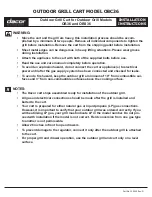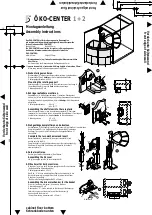
7
Working Principle
4
1.Electrochemistry
A lead-acid battery is an electrical storage device that converts electrical energy into potential chemical
energy; when needed the stored chemical energy can be converted back into electrical energy again to be
supplied to external systems. In the discharge state, part of PbO at the positive turns into PbSO , and part of
2
4
Pb at the negative also turns into PbSO4. In this electro-chemical reaction, both positive and negative
electrodes generate PbSO . In the charging state, the lead sulfate(PbSO ) at the positive and negative turns
4
4
into PbO and Pb, respectively. When in discharging, the concentration and density of H SO decreases
2
2
4
gradually; while in charging, it increases. Battery charging and discharging are realized by electrochemical
reactions.
2. Oxygen Combination
The positive plate generates oxygen gas in the final stage of charging. Under the condition of excessive
additives at the negative, oxygen spreads to the negative plates through PE compound separator and reacts
with spongy lead and forms lead oxide and then turns into lead sulfate and water. Keep the negative plates in
depolarization or under charge state so that the battery cannot reach the over potential of oxygen gassing.
Thus the battery avoids oxygen gassing and water loss and is made a maintenance free sealed storage
battery.
4
6
Battery Features
1. Long Service Life
Heavy duty lead-calcium grids ensure mild corrosion and enable a long designed service life of 18 years standby use
under optimal float charge conditions and below optimal operating temperature of 20
.
2. Excellent and High Efficient
Discharge
RITAR batteries are equipped with low resistant plates and conducting parts, which decrease the internal resistance and
ensure the highest discharging efficiency.
3. Sextuple Sealed Construction
Valve regulated sealed construction and sextuple strengthened sealing on terminals and posts prevent electrolyte leakage,
and guarantee the air tight and liquid tight state of batteries in normal operation and prevent external air from entering
battery inner.
4. Low Self Discharge
Because of the use of lead-calcium grids alloy, RITAR batteries have low self discharge and reliable performance. In room
temperature, self discharge ratio per month of RITAR battery is about 3% of the battery capacity.
5. High Security
RITAR batteries are equipped with explosion-proof safety valves to prevent production of redundant gas. And the
construction is designed to prevent setting fire to the internal battery in case sparkles approach.
6. High Efficiency of Recovery
Unique formulas are used in lead paste of positive post and ensure the battery can be recharged easily to a normal level.
7. No Electrolyte Stratification
Special additives are use in electrolyte to give it a gelatinous consistency without flowing, leaking or stratification, and
make all parts of plates react evenly.
8.Radial Plate Grid
The plate is of radial structure. The internal resistance of radial grid is smaller than that of vertical grid. The smaller the
internal resistance is, the better the discharge performance is.
9.Bold Lead Parts
By increasing the cross-sectional area of lead parts, the high current discharge capacity of battery can be improved.






























